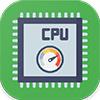 Estimated results for PassMark CPU Mark
Estimated results for PassMark CPU Mark
|
|
Intel Core i5-10400
6C 12T @ 2.9 GHz
|
12267
|
|
|
Intel Core i7-950
4C 8T @ 3.06 GHz
|
3178
|
 Geekbench 6 (Multi-Core)
Geekbench 6 (Multi-Core)
|
|
Intel Core i5-10400
6C 12T @ 2.9 GHz
|
6261
|
|
|
Intel Core i7-950
4C 8T @ 3.06 GHz
|
1965
|
 Geekbench 5, 64bit (Multi-Core)
Geekbench 5, 64bit (Multi-Core)
|
|
Intel Core i5-10400
6C 12T @ 2.9 GHz
|
5870
|
|
|
Intel Core i7-950
4C 8T @ 3.06 GHz
|
2313
|
 CPU-Z Benchmark 17 (Multi-Core)
CPU-Z Benchmark 17 (Multi-Core)
|
|
Intel Core i5-10400
6C 12T @ 2.9 GHz
|
3551
|
|
|
Intel Core i7-950
4C 8T @ 3.06 GHz
|
1442
|
 Geekbench 6 (Single-Core)
Geekbench 6 (Single-Core)
|
|
Intel Core i5-10400
6C 12T @ 2.9 GHz
|
1433
|
|
|
Intel Core i7-950
4C 8T @ 3.06 GHz
|
590
|
 Geekbench 5, 64bit (Single-Core)
Geekbench 5, 64bit (Single-Core)
|
|
Intel Core i5-10400
6C 12T @ 2.9 GHz
|
1120
|
|
|
Intel Core i7-950
4C 8T @ 3.06 GHz
|
569
|

